(Update 28 July 2018) My image from this morning of the combined total lunar eclipse and 2018 opposition of Mars.
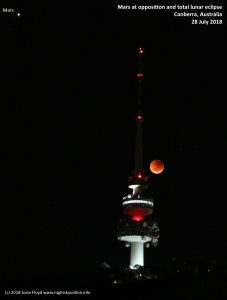
(Posted 30 June 2018) July 2018 features a partial solar eclipse, a total lunar eclipse and the dazzling 2018 opposition of Mars.
The predictable astronomical highlight of July will be be a Total Lunar Eclipse. This will occur on the morning of Saturday 28th July 2018. No optical aid is required to observe the eclipse. More information on lunar eclipses can be found on Wikipedia.
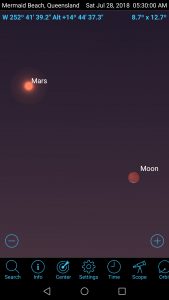
The downside of this total lunar eclipse is that the majority of the total phase of the eclipse is lost in morning twilight for Eastern Australian observers. Event times for the eclipse are listed below for Eastern Australian Observers.
| Event – 28 July 2018 | Australian Eastern Standard Time |
| Penumbral eclipse starts | 3.13 am |
| Partial eclipse starts | 4.24 am |
| Total eclipse starts | 5.30 am (in morning twilight) |
| Mid eclipse | 6.22 am (in morning light) |
As celestial compensation to Eastern Australian observers for not being able to observe the entire eclipse, Mars will be at opposition on the night/morning of Friday 27 July and Saturday 28 July 2018. A good article about the Mars opposition can be found on the EarthSky website.
Mars will be spectacularly easy to locate in the lead up to opposition and in the weeks afterwards. Just look above the Eastern horizon at the end of evening twilight for a brilliant red star. That’s Mars. Telescopically, Mars is a challenging object. It is quite a small planet and seeing recognisable detail on it’s surface through a telescope requires steady atmospheric conditions. The US Sky & Telescope magazine has a on-line program which lets you set in the date and time. It will then generate a map showing you what features should be visible through your telescope under good conditions.
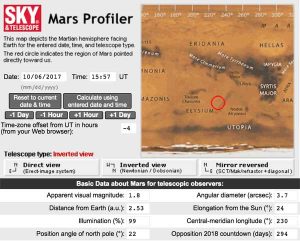
Finally, there is a ‘very’ partial solar eclipse visible from the Southern tip of Eastern Australia.
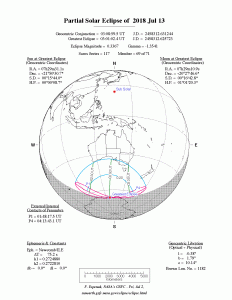
As the above and below map and image show, this eclipse will be a very partial one. The below screenshot shows the partial solar eclipse at maximum for Hobart, Tasmania. This is the best place in Eastern Australia to view the eclipse (the further South the better).
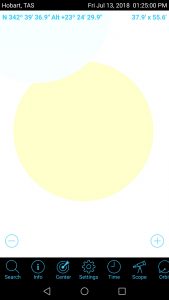
Unlike observing the 28 July 2018 total lunar eclipse, you will need to take safety precautions to observe the partial solar eclipse. An inexpensive way to observe a partial solar eclipse is to put a pinhole in a piece of paper. You can then position the light shining through the pinhole onto a second piece of paper. You look at this projected image.
Do not look through the pinhole at the Sun.
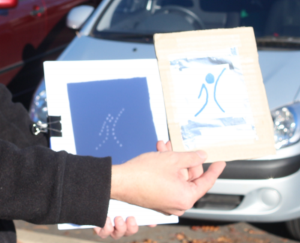
With the eclipse only reaching 3% for Hobart, Tasmania I am not sure if this technique will work though.
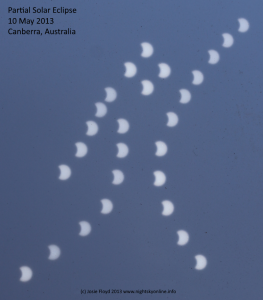
Please contact me if you manage to have clear skies in Hobart on Friday 13 July 2018 and the pinhole projection method works.